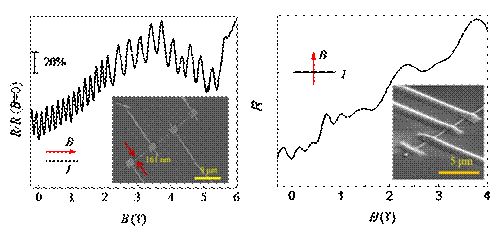Topological Insulator (Topological Insulator) is a novel state of matter, its body phase is an insulating state and the surface is a metal state with zero band gap. In particular, its surface is a conductive state protected by topology and is not disturbed by non-magnetic impurities and crystal defects, so it has important application value in the fields of lossless quantum computing and novel spintronic devices. The discovery and research of time-reversed symmetry-protected three-dimensional topological insulators such as Bi2Te3, Sb2Te3 and Bi2Se3 have inspired researchers to seek new symmetry-protected topological insulators. In 2012, a topological insulator caused by lattice symmetry was theoretically confirmed. Theorists called it a "topological crystalline insulator" (Topological Crystalline Insulator). In the same year, tin telluride (SnTe) was theoretically It is predicted to be a topological crystalline insulator, and its highly symmetrical crystal surfaces such as {001}, {110} and {111} have conductive topological states. Then the Dirac cone of (001) plane of tin telluride single crystal was confirmed experimentally by angle-resolved photoelectric spectrum test. Tin telluride is the first material proven to have a topological crystalline insulator. Its discovery has attracted a wide range of research interests and opened the door to experimental research on topological crystalline insulators.
The low-dimensional nanostructure has a large specific surface area, which can effectively reduce the interference of bulk phase transmission on the surface and thus enhance the surface state effect. More importantly, the one-dimensional topology insulator plays an important role in the field of one-dimensional nanoscale spintronic devices. Roles.
He Jun's group at the National Nanoscience Center used chemical vapor deposition to synthesize high-quality single-crystal tin telluride nanowires for the first time, and observed its topological surface state for the first time through quantum oscillation testing. Based on the four-terminal device of tin telluride nanowires, Aharonov-Bohm (AB) interference effect and Shubnikov-de Haas (SdH) oscillations were observed, which confirmed the existence of Dirac electrons on the highly symmetrical surface of tin telluride nanowires. This work laid a solid experimental foundation for studying the application of low-dimensional topological crystalline insulator (TCI) materials in the field of nanoelectronics and spintronics devices. The related paper Topological surface transport properties of single-crystalline SnTe nanowire will be published in Nano Lett.
In the past two years, He Jun's research group focused on the controllable synthesis of Te- and Se-based low-dimensional semiconductor materials, the characterization of physical and chemical properties control, and the application of electronic optoelectronic devices, and obtained a series of research results. In 2012 and 2013, he published 9 academic papers in internationally renowned magazines, including 2 Nano Lett. And 1 Adv. Mater.
The above work was supported by the National Basic Research Program ("973" project), the Chinese Academy of Sciences "Hundred People Program" project and the National Natural Science Foundation of China.

Nano-center topology crystalline insulator tin telluride nanowires made new progress
Centerpull Towel,Centerpull Paper Roll Towel,Ceterfeed Paper Paper,Centrefeed Roll Towel
BODA ENTERPRISE LIMITED , https://www.bodapaper.com